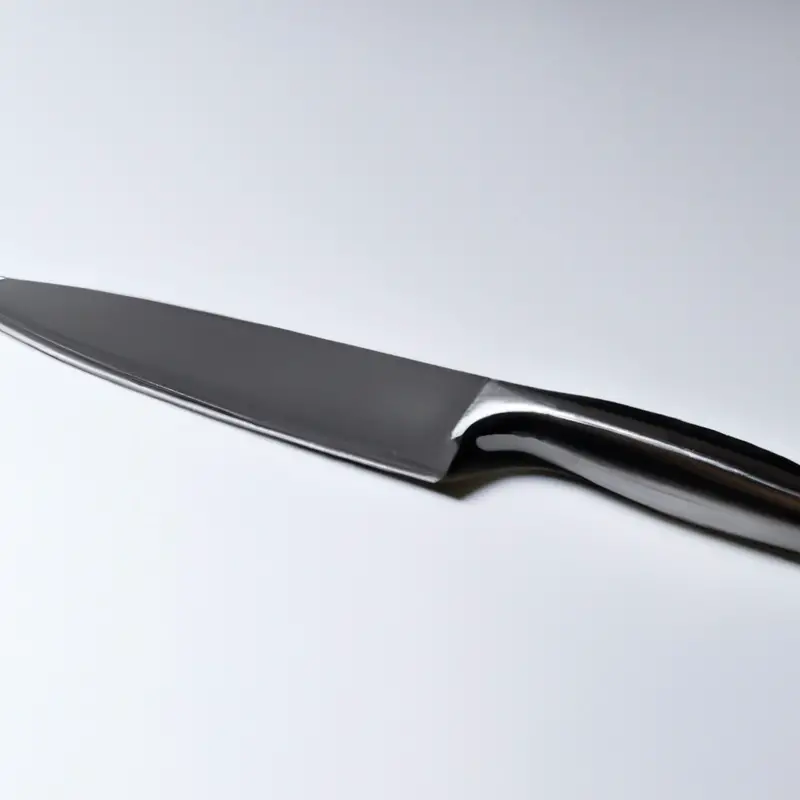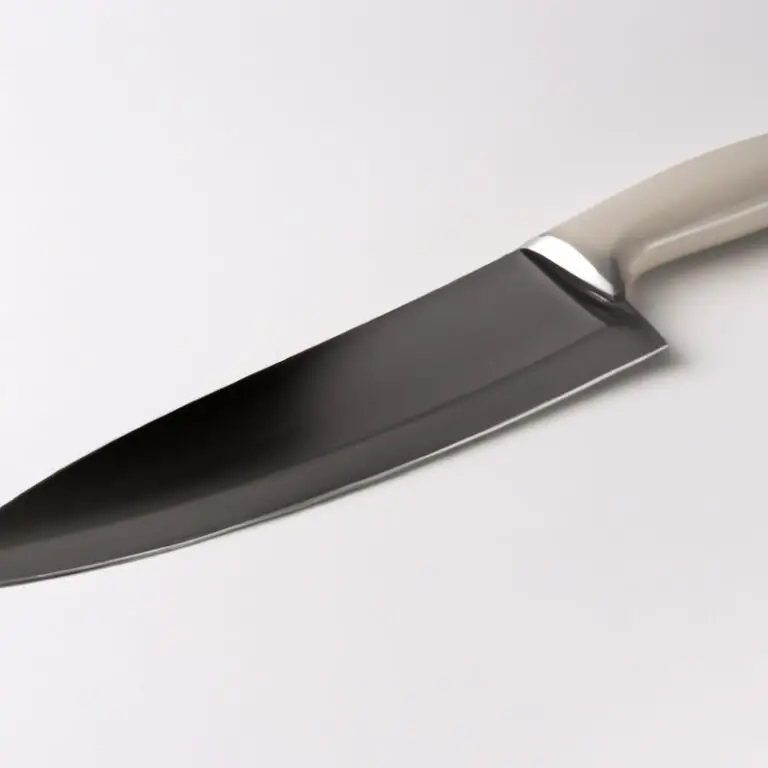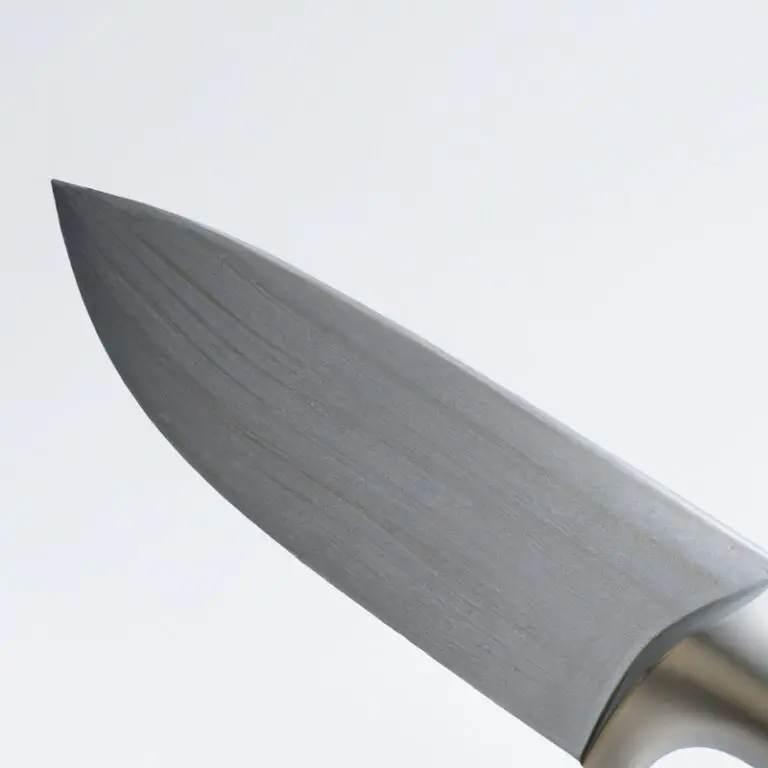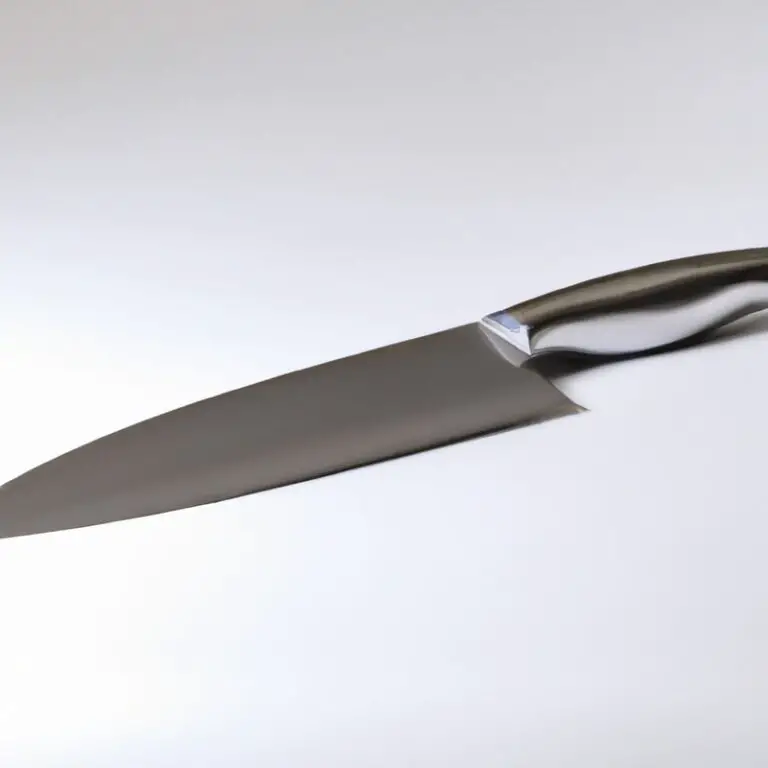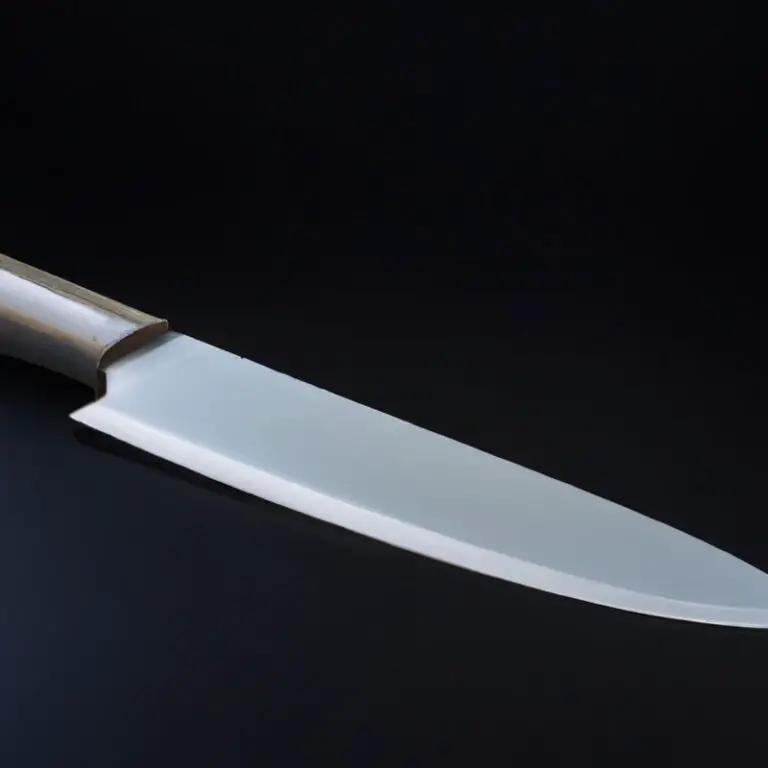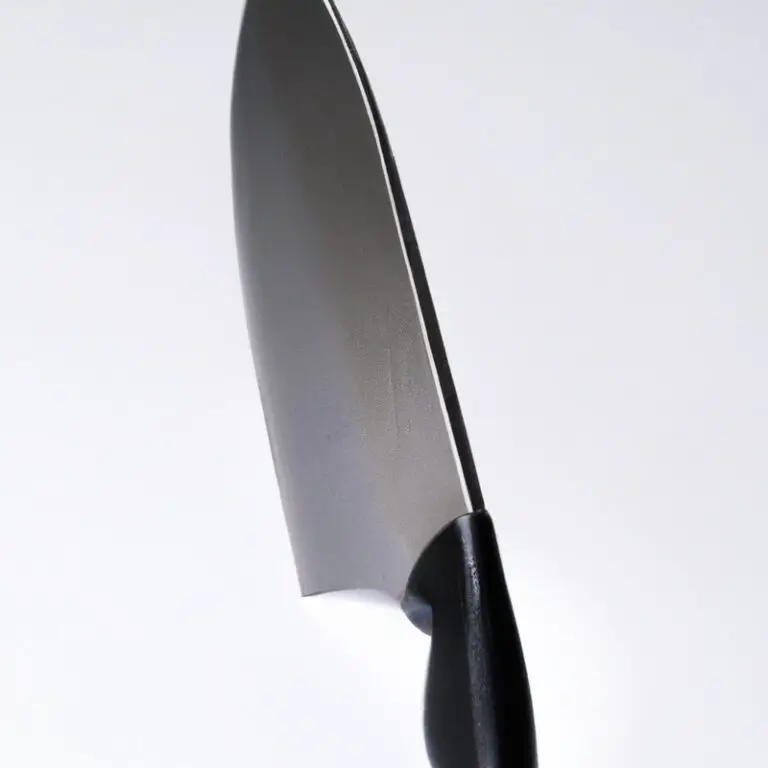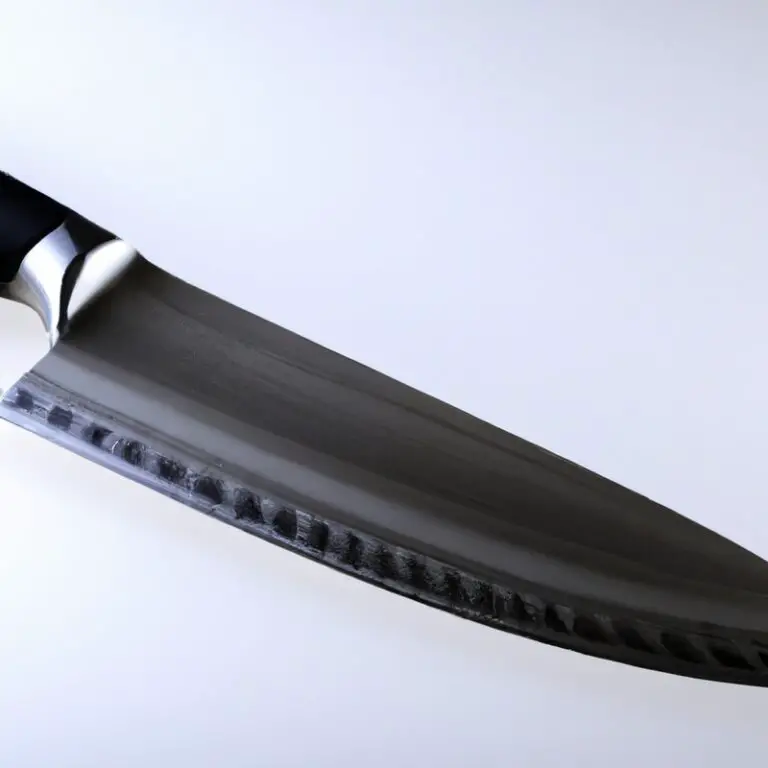Importance And Materials Of Knife Blade Guards For Santoku Knives – Safeguard Your Blade!
Key Takeaways:
- Using a knife blade guard can prolong the life of your Santoku knife by protecting the blade from damage and dullness.
- A high-quality knife blade guard is typically made of durable materials such as plastic or leather, and should fit snugly to prevent slipping or scratching.
- Investing in a reliable knife blade guard is an essential part of maintaining the sharpness and integrity of your Santoku blade over time.
- Properly storing your Santoku knife in a blade guard can help prevent accidents, protect the blade from moisture and oxidation, and ensure that it stays in excellent condition for years to come.
Are you a proud owner of a Santoku knife? These Japanese knives are known for their sharpness and versatility in the kitchen.
But with great sharpness comes great responsibility.
That’s why investing in a knife blade guard is crucial for protecting both you and your Santoku knife. In this article, I will share the importance of knife blade guards, the materials to choose from, and the key features to look for.
We’ll explore the pros and cons of leather, metal, and plastic options and discuss alternative options.
Plus, I’ll share real-life examples of how a knife blade guard can prevent accidents and maintain your knife’s longevity.
| Blade Guard Material | Importance for Santoku Knives |
|---|---|
| Plastic | Provides basic protection against scratches and dents, recommended for limited use and storage |
| Fabric/Cloth | Offers minimal protection and durability, often used for temporary storage |
| Wood | Provides good protection against nicks and chips, recommended for regular use and storage |
| Leather | Offers excellent protection against scratches, dents, and corrosion, recommended for high-quality knives and long-term storage |
| Magnetic | Offers secure and convenient storage, recommended for frequent use and easy access |
Why knife blade guards are crucial for protecting your Santoku knives
Knife blade guards are essential tools for protecting your Santoku knives. They help prevent accidents in the kitchen and extend the life of your knives.
If you store your knives without a blade guard, you risk damaging the blades’ sharp edges and possibly injuring yourself or those around you.
A blade guard also keeps your knives safe and free from dents and scratches if you store them in a drawer or transport them in a bag. Choosing the right material for the blade guard is also crucial.
Leather, metal, and plastic are the most common materials used for this purpose.
Each material has its own strengths and weaknesses, but plastic blade guards are the most recommended for Santoku knives as they are lightweight, durable, and hygienic. Investing in a good quality blade guard is a must for anyone who owns a Santoku knife.
It not only prevents accidents but also keeps your knives well-maintained for years to come.
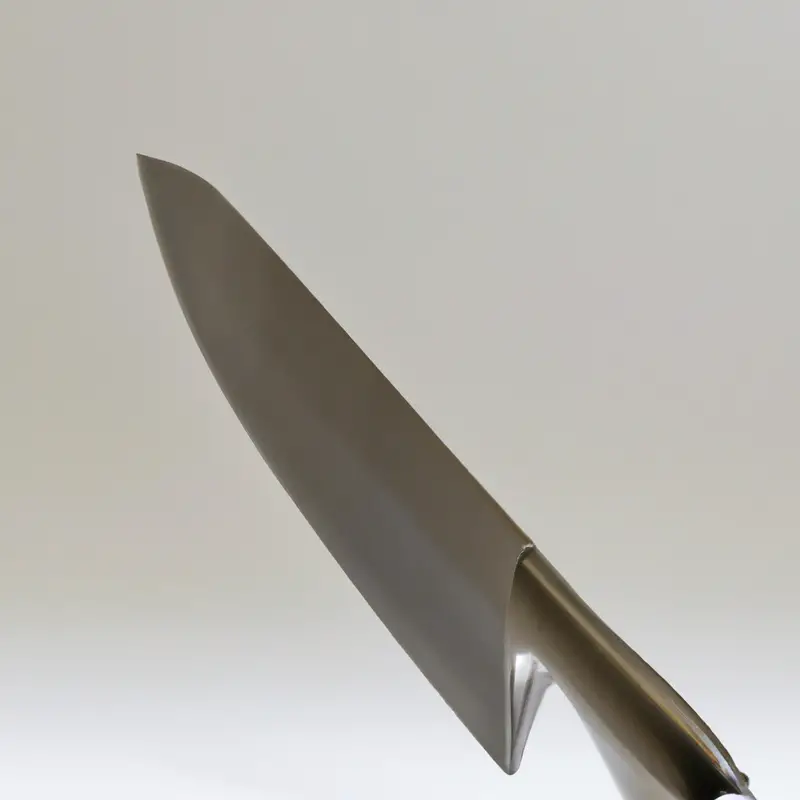
How to choose the right material for your knife blade guard
When it comes to choosing the right material for your knife blade guard, there are a few options to consider. The most common materials for Santoku knife blade guards include leather, metal, and plastic.
Leather knife blade guards offer a sleek and stylish option that can complement the appearance of your Santoku knife.
However, they may not offer as much protection as metal or plastic options. Metal knife blade guards are durable and offer excellent protection for your Santoku knife.
However, they can be heavier and bulkier than other options, and may not fit easily into a storage block.
Plastic knife blade guards are lightweight and convenient, making them a popular option for many Santoku knife owners. They come in a variety of colors and sizes, and are often the most budget-friendly option.
Ultimately, the right material for your Santoku knife blade guard comes down to personal preference and the level of protection you desire.
Consider the level of protection and convenience you need, as well as your budget and aesthetic preferences, when making your decision.
The benefits of using a knife blade guard for your Santoku knives
Using a knife blade guard for your Santoku knives provides numerous benefits, including:
- Protection: A knife blade guard provides a protective covering for your knife blade, minimizing the risk of unintentional injury while handling or storing the knife.
- Durability: Keeping your Santoku knife blade covered with a guard protects it from unnecessary wear and tear, which means it can retain its sharpness for longer periods.
- Hygiene: A blade guard can help keep your knife clean, preventing dust, dirt, and debris from accumulating on the blade.
- Portability: By encasing your Santoku knife blade using a guard, you can easily and safely toss it into your bag before heading out to a picnic, camping, or any other outdoor activities that require a sharp knife.
- Organization: Keeping your Santoku knife blade covered with a guard offers a way to safely store your knife and other sharp objects in one place without the worry of accidental cuts.
Overall, using a knife blade guard on your Santoku knife is a small investment that can go a long way in protecting your knife, as well as yourself and others from accidental injuries.
Key features to look for in a Santoku knife blade guard
When choosing a Santoku knife blade guard, it is essential to consider the following key features:
- Material: The type of material used to make the blade guard affects not only its durability but also its effectiveness in protecting the blade. Leather, metal, and plastic are the most common materials used for blade guards.
- Size: The blade guard should fit snugly on the blade of the Santoku knife to prevent it from slipping off or scratching the blade. It is important to measure the length and width of the knife blade before purchasing a blade guard.
- Design: The design of the blade guard should allow for easy insertion and removal of the knife blade. Some designs have a snap or button closure, while others have a slip-on design.
- Ventilation: A good blade guard should have ventilation holes to allow air to circulate and prevent moisture from accumulating in the blade guard, which can cause rust and corrosion.
- Durability: A durable blade guard will prevent the knife blade from getting damaged and prolong its lifespan. Look for blade guards made of sturdy materials that can withstand frequent use and accidental bumps.
By considering these key features, you can ensure that you are choosing a high-quality Santoku knife blade guard that will protect your knife blade and keep it in pristine condition.
Leather knife blade guards: Pros and cons for Santoku knives
Leather knife blade guards have been a popular choice for protecting Santoku knives for many years. Here are some pros and cons to consider before purchasing a leather knife blade guard for your Santoku knife: Pros:
- Leather is a durable material that can withstand wear and tear, making it a good choice for protecting your knife blade.
- Leather offers a snug fit around your Santoku knife, ensuring that the guard will stay in place and prevent the blade from getting damaged during storage or transport.
- Leather is relatively easy to clean and maintain.
- Leather knife blade guards often have an attractive appearance, adding a touch of style to your kitchen or collection.
Cons:
- Leather is not as flexible as other materials, which can make it difficult to slide on and off of your Santoku knife.
- Depending on the quality of the leather, it may not provide as much protection from scratches or dents as other materials would.
- Leather is not as moisture-resistant as plastic or metal, which can lead to corrosion if your knife is not completely dry before storing it in the guard.
- Leather can be more expensive than other materials, which may not be ideal for those on a budget.
Overall, leather knife blade guards can be a good choice for Santoku knives as long as you keep their pros and cons in mind when making your decision.
Metal knife blade guards: Advantages and disadvantages for Santoku knives
Metal knife blade guards are a popular option for Santoku knives due to their durability and sturdiness. They offer excellent protection against accidental bumps and nicks and are resistant to wear and tear.
However, metal knife blade guards can also have some downsides.
They can scratch the blade’s surface and make it prone to rust. Moreover, metal blade guards can be challenging to remove and can be noisy at times.
It is important to balance the advantages and disadvantages when choosing a metal knife blade guard for your Santoku knife.
Plastic knife blade guards: The best option for Santoku knives?
Plastic knife blade guards are the best option for Santoku knives due to their durability, lightweight design, and affordability. They offer excellent protection for your knives, preventing scratches and damage to the blade.
Plastic guards are also easy to clean and maintain.
They can be easily wiped down with a damp cloth or washed with soap and water. Additionally, plastic knife blade guards come in a wide range of sizes and colors, making it easy to find the perfect fit for your Santoku knife.
Overall, plastic knife blade guards are a practical and cost-effective solution for protecting your Santoku knives.
Alternative options for knife blade guards: Do they provide enough protection for Santoku knives?
Alternative options for knife blade guards, such as sheaths or sleeves made of cloth or silicone, may provide some level of protection for Santoku knives, but they are generally not as effective as traditional knife blade guards. These alternatives are often less durable and can become worn or torn over time, allowing the knife to slide out and potentially cause injury.
Additionally, they may not fit the knife as securely, which can result in the knife moving around while in storage and causing damage to itself or other items nearby.
Therefore, it is recommended to use a traditional knife blade guard made of leather, metal, or plastic for optimal protection and longevity of your Santoku knives.
How to clean and maintain your Santoku knife blade guard to ensure longevity
To maintain the longevity of your Santoku knife blade guard, it is essential to keep it clean. Here’s how you can clean and maintain your Santoku knife blade guard:
- Use a sponge or cloth soaked in warm, soapy water to wipe off any dirt or food particles from your blade guard.
- Rinse the blade guard under running water and dry it with a clean towel.
- If your knife blade guard is made of leather, use a leather conditioner to keep it moisturized and prevent cracking.
- For metal blade guards, you can use a metal polish to remove any rust or stains and keep it shining.
- Plastic blade guards can be washed in the dishwasher or with warm, soapy water, but avoid using scrub brushes or harsh chemicals that can damage the plastic.
- Store your Santoku knife with the blade guard on to prevent dust and dirt buildup, and always dry the knife before sheathing it in the guard.
Regular cleaning and maintenance of your Santoku knife blade guard will ensure its longevity and protect your knife from scratches, dents, and other damages.
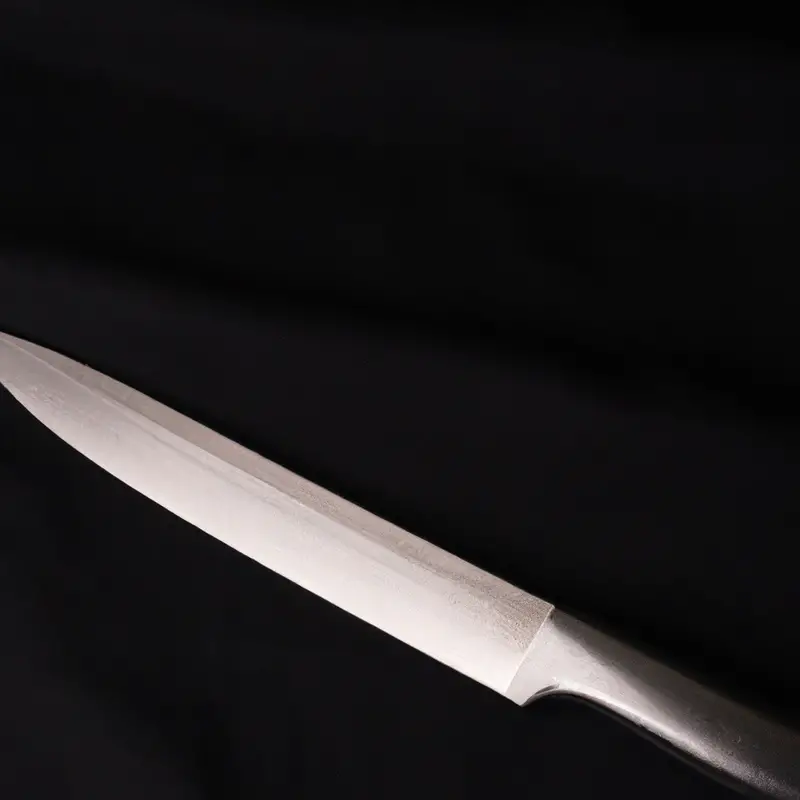
Accidents prevented: Real-life examples of how a knife blade guard can protect you and your knives
Knife blade guards serve a critical purpose in protecting you and your knives from accidents. Real-life examples of how a knife blade guard can prevent harm include: accidentally stabbing yourself when reaching into a drawer, cutting yourself while transporting knives in a bag or case, and damaging the blade or cutting edge during storage.
In all of these cases, a knife blade guard could have prevented harm from occurring.
By investing in a high-quality knife blade guard, you can protect your knives and keep yourself safe from accidents.
Final Verdict
It is evident that knife blade guards are crucial for protecting your Santoku knives, enhancing their longevity and reducing the risk of accidents. With various materials available, choosing the right one can ensure optimal protection, durability, and ease of maintenance for your Santoku knives.
While each material has its own advantages and disadvantages, it ultimately comes down to your personal preference and needs.
By investing in a high-quality knife blade guard and taking proper care of it, you can ensure your Santoku knives maintain their sharp edges and functionality. Remember, taking preventive measures such as using knife blade guards not only shows responsibility but also adds to your culinary expertise.
Protect your knives, protect yourself, and elevate your cooking experience by incorporating knife blade guards into your kitchen routine.

